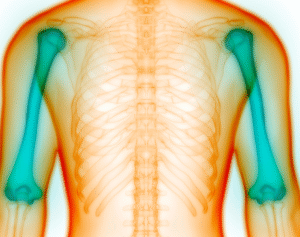Understanding the Symptoms of Fibromyalgia in Women
Fibromyalgia is a long-term neurological condition characterized by chronic widespread pain, fatigue, cognitive disruptions, and numerous other symptoms that affect daily life. While it impacts individuals across genders and ages, research consistently shows that women are disproportionately affected. In fact, approximately 80 to 90 percent of diagnosed cases are women, a disparity that may be influenced by hormonal, genetic, and neurochemical factors.
The symptoms of fibromyalgia in women often appear more intense, frequent, and multifaceted than in men. Hormonal fluctuations, especially during menstruation, pregnancy, and menopause, can amplify the condition’s impact. This article takes a deep dive into how fibromyalgia manifests in women, highlighting the complex interplay of physical, emotional, and neurological symptoms.
Chronic Widespread Pain
The most dominant symptom of fibromyalgia in women is persistent pain throughout the body. This pain is typically described as a deep, aching sensation in the muscles, joints, and soft tissues. It often shifts in location, intensity, and type, ranging from sharp and stabbing to dull and burning.
Women tend to report higher pain sensitivity, which may be linked to estrogen’s influence on pain receptors. Common pain hotspots include the neck, shoulders, lower back, hips, and thighs. These areas may remain tender to the touch and become even more painful with physical activity or stress.
Fatigue and Exhaustion
Chronic fatigue is a hallmark of fibromyalgia. Women often describe it as feeling physically drained even after a full night’s sleep. It is not the kind of tiredness that improves with rest. This fatigue impacts concentration, mood, and overall quality of life.
Some women experience what is termed “post-exertional malaise,” where even minor physical or mental activity results in an overwhelming crash of energy and flu-like symptoms the next day. Fatigue can be so severe that it interferes with work, parenting, and basic self-care.
Cognitive Dysfunction or Fibro Fog
Cognitive symptoms, often referred to as fibro fog, are particularly troubling for many women. These include forgetfulness, lack of mental clarity, difficulty with concentration, and a slowed thought process. Many women report struggling to complete routine tasks, follow conversations, or remember details.
This fog can come and go without warning, often worsening during periods of stress, hormonal changes, or sleep disturbances. It adds an invisible layer of difficulty to an already challenging condition.
Heightened Sensitivity
Women with fibromyalgia often have heightened sensitivity to touch, light, sound, smells, and temperature changes. Everyday stimuli that others barely notice can feel intense or even painful. This symptom is known as sensory overload.
Environmental triggers like strong perfume, loud noises, or bright lights may cause discomfort or migraines. Cold and damp weather conditions can worsen muscle stiffness and pain, making winter months particularly difficult for many women with fibromyalgia.
Sleep Disturbances
Unrefreshing sleep is nearly universal among women with fibromyalgia. Even after spending eight hours in bed, many wake up feeling as though they never slept. This is often due to disruptions in deep sleep stages, during which the body performs most of its restorative functions.
Sleep disorders such as restless leg syndrome, insomnia, and sleep apnea commonly coexist with fibromyalgia, especially in women. Poor sleep amplifies other symptoms like fatigue, pain, and mood disorders, creating a vicious cycle that is difficult to break.
Menstrual and Hormonal Complications
Fibromyalgia symptoms in women are often exacerbated by menstrual cycles. Many report more intense pain and fatigue during their periods. Hormonal changes related to estrogen and progesterone are believed to affect pain processing and nerve sensitivity.
Additionally, pregnancy and menopause can trigger or worsen fibromyalgia symptoms. For example, some women experience flares during the third trimester or suffer more severe cognitive and emotional symptoms during menopause.
Mood Disorders and Emotional Struggles
Women with fibromyalgia are more likely to experience mood-related symptoms such as anxiety, depression, and emotional sensitivity. These are not just reactions to chronic pain but part of the condition’s neurological makeup.
Many women describe feeling overwhelmed, irritable, or tearful without an obvious cause. Chronic stress can exacerbate these symptoms, and they may also be linked to neurotransmitter imbalances involving serotonin and dopamine.
Gastrointestinal Issues
A large number of women with fibromyalgia also suffer from digestive problems. Symptoms may include bloating, constipation, diarrhea, gas, and abdominal pain. These are commonly diagnosed as part of irritable bowel syndrome (IBS), which frequently overlaps with fibromyalgia.
Dietary triggers, stress, and hormonal fluctuations can all worsen gastrointestinal symptoms. In some cases, women report sensitivity to gluten, lactose, or other common foods, although formal allergies are not always present.
Migraines and Headaches
Chronic headaches and migraines are prevalent among women with fibromyalgia. These can be tension-type headaches or migraines with aura, often exacerbated by stress, sleep disturbances, or hormonal changes.
Headaches can significantly impair daily functioning and often overlap with other symptoms such as visual disturbances, neck pain, and sensitivity to light or sound.
Pelvic and Bladder Pain
Women with fibromyalgia may also experience pelvic pain, frequent urination, or bladder discomfort. These symptoms often overlap with interstitial cystitis, a condition that causes bladder pressure and pain.
Pelvic pain may mimic menstrual cramps but can occur at any time during the cycle. It may interfere with sexual activity and lead to increased discomfort in intimate relationships.
Joint Stiffness and Muscle Spasms
Morning stiffness is another common symptom in women with fibromyalgia. It may take an hour or more for the body to become fully mobile after waking. This stiffness often mimics arthritis but without the joint swelling or inflammation typically seen in rheumatic diseases.
Involuntary muscle spasms or twitching may also occur, particularly during sleep or rest periods, disrupting relaxation and causing additional discomfort.
Temperature Regulation Problems
Many women with fibromyalgia report difficulty regulating body temperature. They may feel unusually cold or hot without external cause. These changes can lead to night sweats, chills, or extreme discomfort in certain environments.
This symptom is often overlooked but can be one of the most distressing, especially when paired with insomnia or hot flashes during menopause.
FAQs on Symptoms of Fibromyalgia in Women
1. Are the symptoms of fibromyalgia worse in women than in men?
Women tend to report more severe symptoms and more frequent flares, possibly due to hormonal influences and greater sensitivity to pain.
2. Can fibromyalgia symptoms change over time in women?
Yes, symptoms may fluctuate based on stress, sleep, weather, diet, and hormonal cycles such as menstruation and menopause.
3. Why is fibromyalgia more common in women?
The exact reason is unknown, but it is believed to be related to hormonal, genetic, and neurological differences that affect pain perception.
4. How does fibromyalgia affect women’s mental health?
It often leads to depression, anxiety, emotional sensitivity, and cognitive disturbances like fibro fog, all of which can deeply impact daily life.
5. Are there gender-specific treatments for fibromyalgia in women?
While treatment principles are similar, women may benefit from approaches tailored to hormonal health, menstrual cycles, and emotional well-being.
6. What is the first symptom women usually notice?
Persistent fatigue or muscle pain is typically the first sign, though cognitive issues and mood swings may follow shortly after.
Conclusion
Fibromyalgia in women is a complex, multifaceted condition that affects nearly every aspect of physical and emotional health. From unrelenting pain and sleep disturbances to cognitive dysfunction and mood disorders, the symptoms can be overwhelming and persistent.
Recognizing these symptoms early is essential for effective treatment and improved quality of life. Women must be empowered to speak openly about their experiences and advocate for comprehensive care. Understanding and validating the unique manifestations of fibromyalgia in women is the first step toward breaking the silence and moving forward with hope and resilience.



